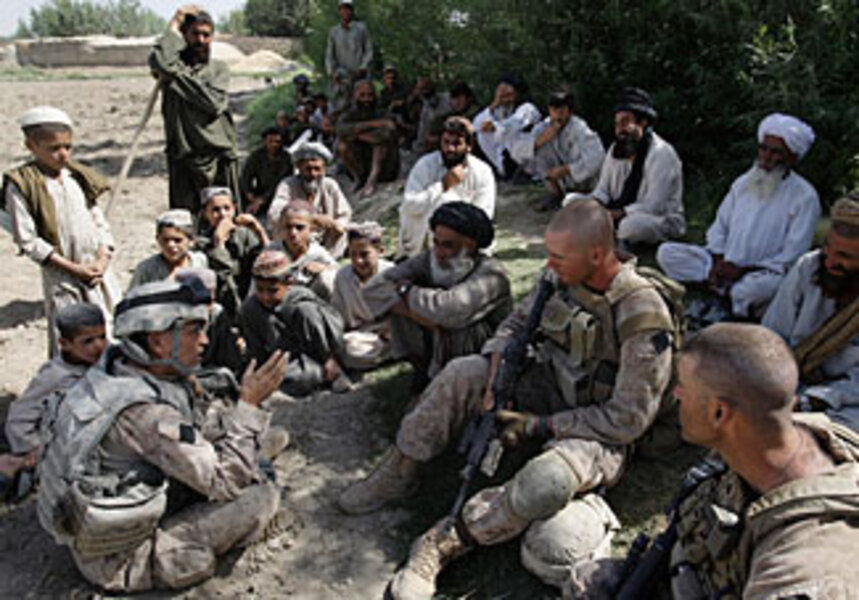US push to put an Afghan face on Helmand offensive
| Washington
There is a new push to dramatically expand the size of the Afghan Army and police, as the military operations now under way in southern Afghanistan is marked by a conspicuous absence of Afghans in the fight.
The US's new Afghanistan strategy focuses on protecting the local population, reducing civilian casualties, and establishing security in Helmand, where the Taliban and other extremist groups have operated with relative impunity. But the military operation in the south that began July 1 has few Afghan soldiers, according to US commanders in the field.
Congress is growing concerned, and is pushing the administration to grow the Afghan forces.
"[T]here are troubling reports that our commanders in the field are hampered by an insufficient numbers of [Afghan National Security Forces]," Sens. Carl Levin, chairman of the Senate Armed Services Committee, and Joe Lieberman (Ind.) of Connecticut wrote in a letter Monday to national security advisor James Jones.
"Given the length of time it takes to recruit, train, equip and mentor effective indigenous security forces, it is our view that the sooner a decision can be made to expand the ANSF end strength, the better," the senators wrote.
Gen. David Petraeus, commander of US Central Command, has said he would like to see the Afghan security forces grow to about 400,000. The ANSF has grown by 37 percent since last year, and now stands at about 175,000, including both police and army.
Crucial for counterinsurgency
The Helmand offensive points to the need for more Afghans in the battlefield. There are roughly 4,000 US Marines operating in the Helmand region, but only about 650 Afghan soldiers fighting alongside them. There are also 6,500 British troops in the province.
"I'm not going to sugarcoat it," said Brig. Gen. Lawrence Nicholson, commander of the Marine Expeditionary Brigade running the operation there, in a briefing with reporters earlier this month. "The fact of the matter is, we don't have enough Afghan forces, and I'd like more."
There are in fact a total of 5,000 Afghan soldiers in Helmand, and more are said to be on the way, but officials haven't explained why they're not involved in the new offensive. The rest of the Afghan army is posted around the country, with many in the north, where violence is reasonably low.
Putting an "Afghan face" on military operations is more than window dressing.
"Building a larger – yet still professional – ANA [Afghan National Army] will be one of the pillars of a successful counterinsurgency strategy in Afghanistan," says Carter Malkasian, an analyst with CNA, a think tank in Washington. "The ANA are cheap, good at gathering information, and respected by the population. The more well-trained, well-advised Afghan soldiers, the better."
Long-standing demand
Afghan security forces bear the brunt of the casualties, with the police losing about a company of men each month in the fighting, says a defense official in Kabul.
Afghan officials have long asked for help to build a bigger army and national police force, but those pleas went unheeded as the Bush administration shoveled resources toward Iraqi security forces – which number about 650,000 including police and army.
The Afghan Army has officially about 90,000 trained soldiers and about 85,000 trained police, but some experts say the number is actually far less. Many units are not fully-manned. An Afghan "kandak," or battalion, for example, should have at least 650 men, but many have half that.
In the coming days, Gen. Stanley McChrystal, the new commander in Afghanistan, will release his assessment of the military mission there. He is widely expected to ask for more Afghan forces.





